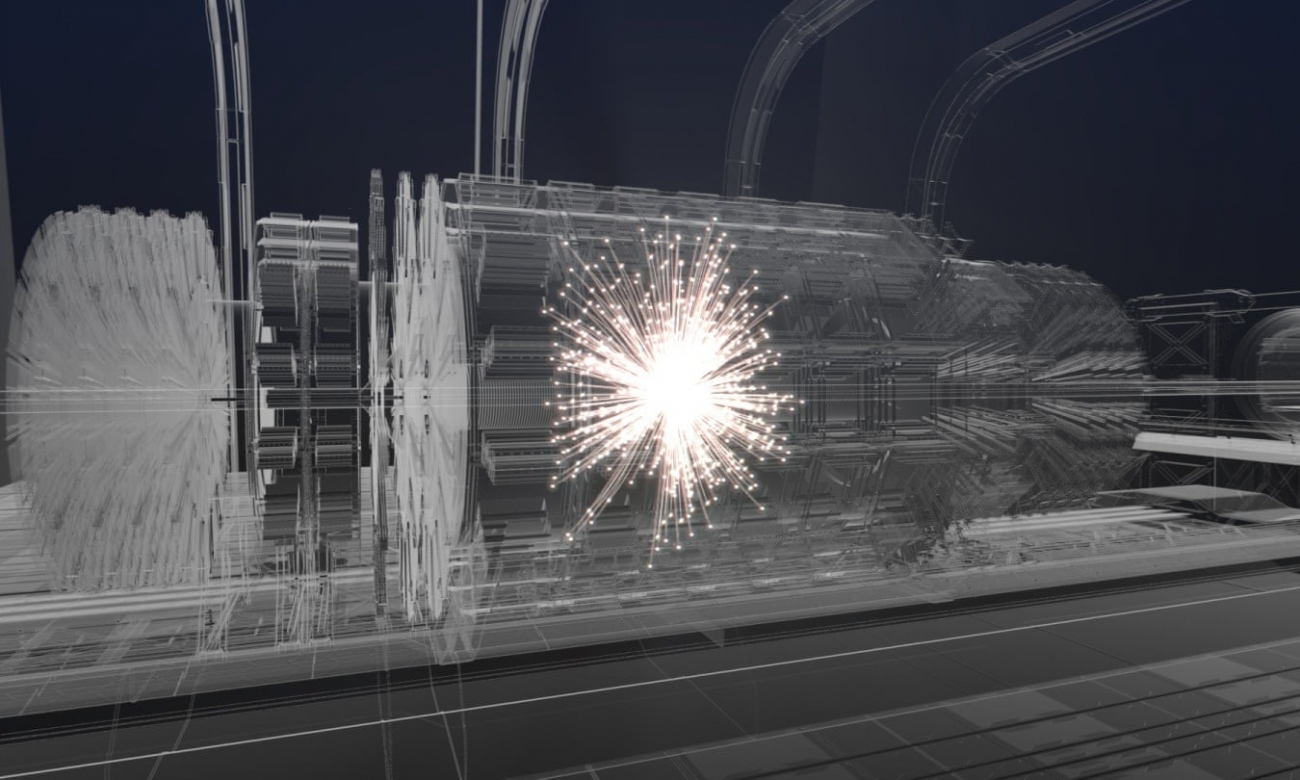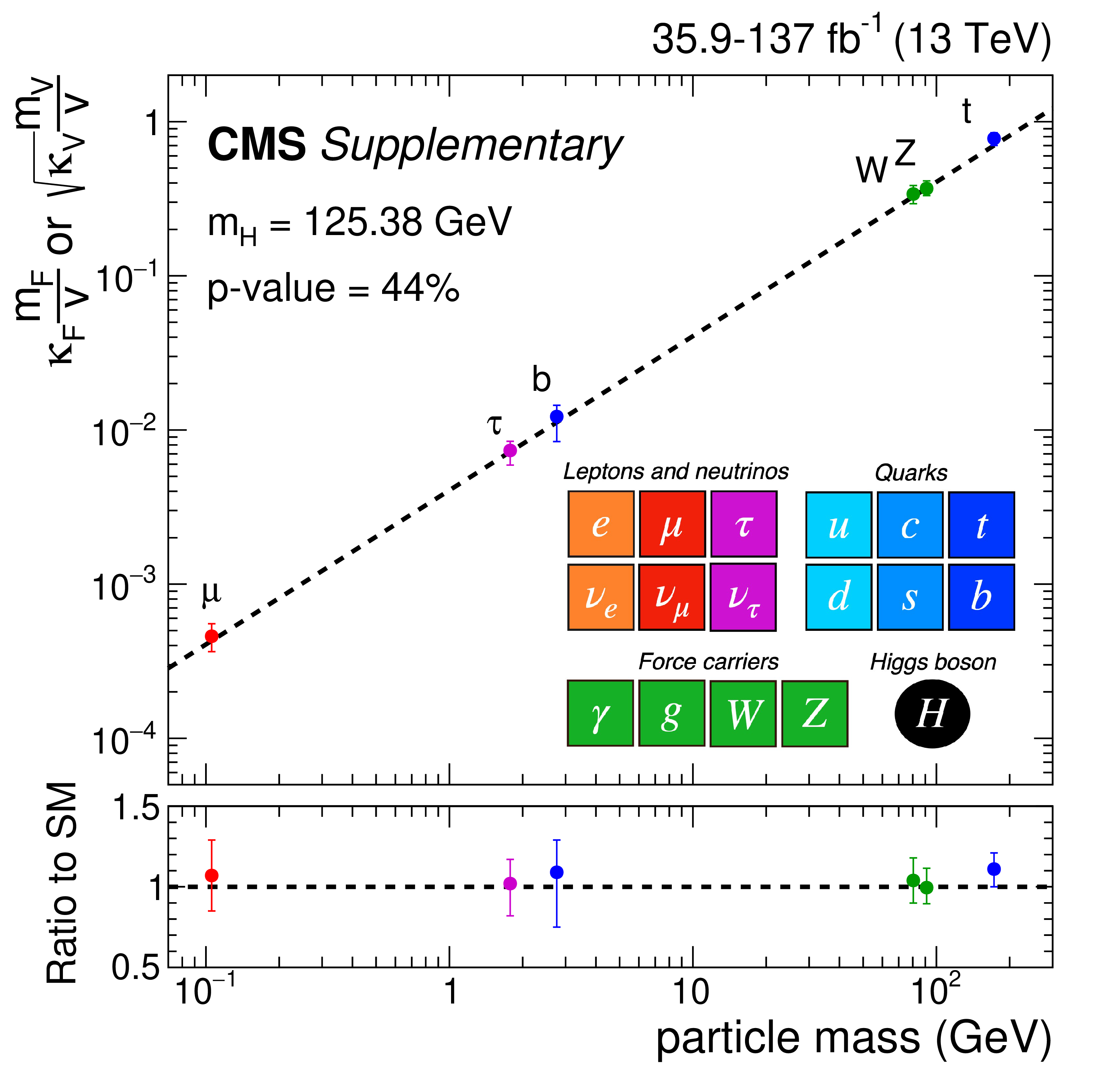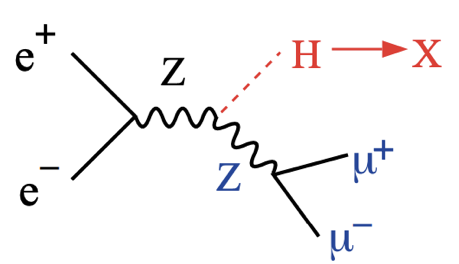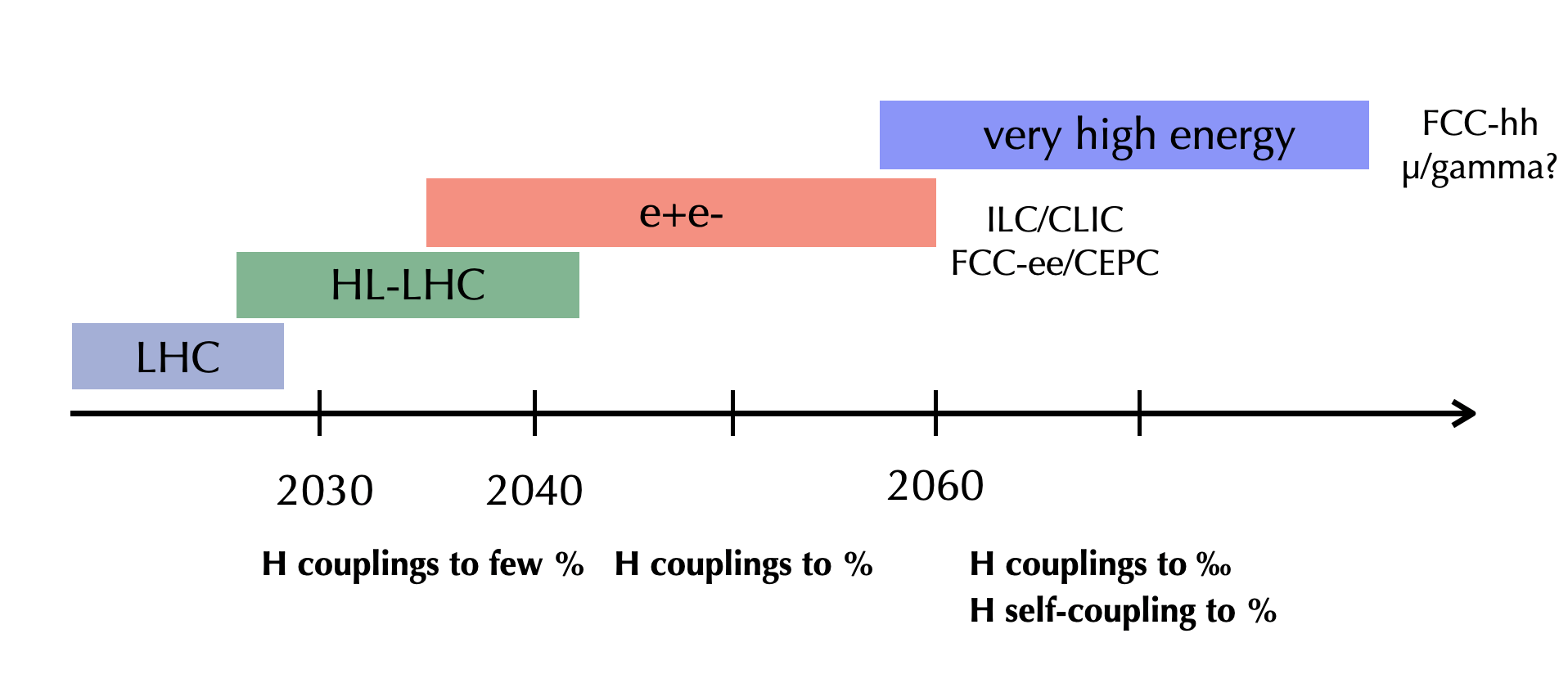Higgs physics at future colliders

In her article, Caterina Vernieri, reviews the potential of proposed future colliders to study the Higgs boson and further explore the electroweak sector beyond the LHC following her presentation on the Higgs 2020 conference. Caterina, is a member of the ATLAS collaboration (previously CMS 2012-2018) and co-convener of the Higgs studies group within Snowmass21, an ongoing community driven process to identify a scientific vision for the future of particle physics in the U.S. together with its international partners. Since its establishment, Snowmass offers an opportunity for the whole community to investigate both the physics goals and required tools (infrastructures, detection methods) offering the best scientific potential. Clearly, one of the main experimental milestones for the post-LHC landscape is the study of the Higgs boson that has the potential to shed light on a number of fundamental challenges in modern physics. In her own words, the Higgs boson is one of the central elements in the future of collider physics.
The Standard Model (SM) of particle physics, sums up our current understanding of elementary particles and their fundamental interactions. In 2012 both ATLAS and CMS experiments independently reported the first observation of the Higgs boson, an entirely new state of matter-energy, one of the most significant scientific discoveries in the recent history of experimental physics. This discovery has opened the way to the exploration of a new sector of the SM Lagrangian that we are now probing at the LHC. The HEP community is currently engaged in planning exercises to evaluate and set new directions in particle physics research. Following the European Strategy group studies, the US Particle Physics Community Planning Exercise, Snowmass21, process has recently started and it will guide the US HEP program for the future years.
Although most of the SM’s predictions have been tested successfully to a high level of accuracy in a variety of experiments, it falls short of being a complete theory of the fundamental interactions: gravitation and general relativity are not included and it lacks an explanation of the masses and mixings of quarks and leptons and dark matter, just to give a few examples. As we do not have (yet) any direct evidence for the new particles and forces beyond the SM, precision measurements of the properties of the Higgs boson offer a promising opportunity for discovery of new phenomena not described by the SM. With no surprise, the understanding of the Higgs boson plays a unique role in the exploration of the energy and instrumentation frontiers at future colliders.
The energy potential of the Higgs boson field, responsible for the electroweak symmetry breaking (EWSB) mechanism, is still very far from being probed. After EWSB, the Higgs boson potential gives rise to cubic and quartic terms in the Higgs boson field, inducing a self-coupling term. The Higgs boson self-coupling, within the SM, is fully predicted in terms of the Fermi coupling constant and the Higgs boson mass, which has been measured at per-mille level accuracy by the ATLAS and CMS experiments [ATLAS-CONF-2020-005, CMS-2002.06398]. The Higgs self-coupling is accessible through Higgs boson pair production (HH) and radiative corrections to single Higgs measurements. Measuring this coupling is essential to shed light on the structure of the Higgs potential, whose exact shape can have deep theoretical consequences.
Moreover, the Higgs boson couplings within the SM are predicted with a per mille accuracy. Any deviation from these predictions would be a sign of new physics. Any new force that affects EWSB necessarily couples to the Higgs boson. The precision on a certain Higgs boson coupling is largely related to the sensitivity to the scale of new physics. The effects of these new particles will be of order v2/Λ2, where v is the Higgs vacuum expectation value and Λ the new physics energy scale. This implies that new physics energy scales of a few TeV will generally modify Higgs boson couplings at the percent level.
LHC Run 2 is providing a wealth of new measurements and we are entering the era of precision Higgs physics, with some of the Higgs boson couplings measurements approaching O(5-10)% precision, as summarized in Figure 1. The High Luminosity era of LHC (HL-LHC), starting in 2027, will extend the LHC dataset by a factor 10, and produce about 170 million Higgs bosons and 120 thousand Higgs boson pairs. This would allow an increase in the precision for most of the Higgs boson couplings measurements. The conditions of the data-taking will present challenges of higher data rates, larger radiation dose, and unprecedented levels of pileup - with about 200 collisions on average per bunch crossing - and both the ATLAS and CMS experiments are going through major upgrades to ensure robust performance.


Figure 1. Top: The best-fit estimates for the reduced coupling modifiers extracted for fermions and weak bosons compared to their corresponding prediction from the SM. The associated error bars represent 68% CL intervals for the measured parameters [CMS-HIG-19-006], Bottom: Best-fit values and uncertainties for Higgs boson coupling modifiers per particle type with effective photon and gluon couplings and the branching fraction to invisible (Bi) and undetected decays (Bu) included as free parameters and the measurement of the Higgs boson decay rate into invisible final states included in the combination [ATLAS-CONF-2020-027].
HL-LHC will dramatically expand the physics reach for Higgs physics. Current projections are based on the Run 2 results and some basic assumptions that systematic uncertainties will scale with luminosity and that improved reconstruction and analysis techniques will be able to mitigate pileup effects. Studies based on the 3000/fb HL-LHC dataset, estimate that we could achieve 2-4% precision on the couplings to W, Z and third generation fermions. But the couplings to first and second generations will still not be accessible at the LHC and the self-coupling will only be probed with O(50%) precision. We will be able to exclude the hypothesis corresponding to the absence of self-coupling at the 95% CL in these projections for HL-LHC, but not to test the SM prediction.
It is clear that to gain a complete and precise understanding of the Higgs boson properties and measure new physics effects we will need to go beyond LHC and HL-LHC. Gaining access to the very high energy regime could potentially enable the production of on-shell new physics particles, if they exist, that are related to new forces. If the new particles are too heavy to be produced at the HL-LHC, precision measurements of the Higgs boson couplings will give a hint about modifications of the SM. Precision of O(few%) level or below requires collider experiments designed for high precision. The complementarity between leptonic and hadronic initial states will eventually lead to the most precise and comprehensive understanding of the Higgs couplings to gather insight on where new physics lies.
Future machines are charged with the challenging tasks to test the SM predictions of the Higgs boson Yukawa couplings to light flavor quarks and the self-coupling. The latter demands access to high energy center-0f-mass collisions to benefit from larger dataset of HH pairs.
The HEP community is evaluating various options for future colliders facilities based on different technologies and their levels of maturity. Depending on the initial state different values for the centre of mass of energy (√s ) are accessible. Circular e+e- colliders (CEPC, FCC-ee) can explore the √s range of 90-350 GeV, while linear e+e- colliders (ILC, CLIC, C3) can probe √s up to 3TeV. Hadron colliders technology could scale to probe √s ~ 75-200 TeV (FCC-hh aims for 100 TeV). Muon and gamma based colliders, if technologic limitations are overcome, could offer the opportunity to probe very high energy up to √s of 30 TeV.
Each of these machines is designed to produce a large number of Higgs bosons in addition to the HL-LHC dataset. Different initial states offer different challenges and opportunities, as they probe different physics processes which translate into complementary sensitivity to the various Higgs boson couplings.

At an e+e- collider with √s ~ 250 GeV, ZH is the dominant production mechanism and the key process for the determination of the absolute Higgs couplings. The well defined initial state allows the exploitation of the kinematics of the associated production with the ``recoil technique”. By measuring only the momenta of the decay products of the Z boson which recoils against the Higgs boson, one could identify the Higgs boson independently of its decay mode. This enables the measurement of the inclusive ZH cross section at 0.5-1% [1604.07524], as well as unprecedented sensitivity to invisible and exotic decay modes. The clean environment at e+e- colliders results in excellent b- and c-tagging performance and opens up the possibility for a direct determination of the coupling to c-quarks.
The Higgs self-coupling at an e+e- collider can be studied through double Higgs production only at higher energy when ZHH and ννHH production mechanisms become accessible at √s ~500 GeV and √s ≥ 1 TeV respectively. Alternatively at lower energy, radiative corrections to single Higgs boson production can provide sensitivity to the self-coupling. The relative enhancement of the ZH cross-section is of the order of few % and it has been demonstrated that the self-coupling could be extracted by correlating measurements as a function of the centre of mass of energy.
The physics potential of a future 100 TeV pp collider is evaluated assuming the input of a previous e+e- run. Taking as a given the value of the Higgs boson coupling to Z, it could be possible to study rare decays, absolute couplings of the Higgs to γγ, µµ and Zγ with sub-% precision. FCC-hh will also provide huge statistics of HH events (40 times more than LHC) to determine the self-coupling and the top quark Yukawa coupling to %-level depending on the systematic assumptions.
A quantitative analysis of the physics potential of some of these future facilities has been performed in the context of the European Strategy study group as shown in Figure 2 [1905.03764]. Future colliders under consideration will improve with respect to the HL-LHC the understanding of the Higgs boson couplings down to 1-5% precision. While the couplings to µ/𝜸/Z𝜸 benefit the most from the large dataset available at HL-LHC and will not really be improved at future e+e- machines, the couplings that require precision such as b, c - quarks and tau leptons could be directly measured with an accuracy of order of 1% or below.
Regarding the Higgs self-coupling depending on the initial state and √s, each machine could access it through either single Higgs or double Higgs production. Future circular and linear e+e- machines could probe the self-coupling mostly through single Higgs processes with O(30-50%) precision. Linear e+e- at high energy (√s>1 TeV) and future circular hadronic machines (at 100 TeV) could instead access HH production and provide 10% and 3-5% precision on the Higgs self-coupling respectively.

Figure 2. Top, Sensitivity at 68% probability to deviations in the different effective Higgs couplings from a global fit to the projections available at each future collider project [1905.03764]. Bottom, Sensitivity at 68% probability on the Higgs self-coupling at the various future colliders. These values are combined with an independent determination of the self-coupling with uncertainty 50% from the HL-LHC [1910.00012, 2004.03505].

The exploitation of the complementarity between HL-LHC and future e+e- colliders - depending on their timeline - will be the key to explore the Higgs sector.
Future e+e- Higgs factories will offer unique opportunities for very high precision determination of the Higgs boson properties. All proposed e+e- colliders are capable of reaching O (1%) precision for many of the Higgs couplings. An e+e-collider will add precision and complement the HL-LHC physics program by enabling the measurements to first and second generation fermions that are not accessible at the LHC.
HL-LHC will start taking data in the ‘30 and will allow us to measure some of the Higgs boson couplings to a few%. The goal of a next-generation e+e- collider is to carry out precision measurements to % level of the Higgs boson properties that are not accessible at the LHC/HL-LHC.
Time matters, it would be ideal to have data from the next e+e- Higgs factory available around the same time as HL-LHC to fully explore their complementarity and acquire sufficient proof that physics beyond the SM exists and which is its energy scale, Λ. This will provide enough information to the HEP community to target the new physics energy scale for the next VERY high energy machine. To access new forces at energy Λ, the new collider would likely need to produce parton-parton collisions with CM energies of tens of TeV. Pushing the energy frontier, in a sustainable way, requires collaborative R&D effort to advance key accelerator technologies including high-field magnets, superconductivity and accelerating (RF) cavities. Last year, Fermilab accelerator steering dipole magnet achieved a world-record of a 14.5 T. This is a major milestone towards addressing the demanding high-field magnet requirements for future pp colliders. The feasibility of alternative technologies to pp, like muon and gamma colliders, is yet to be proven but could enable a new era for the exploration of the Energy Frontier.
One option beyond pp to explore the very high energy regime is the concept of a muon collider* [1901.06150]. If the ongoing accelerator R&D will demonstrate its feasibility, a muon collider has a great potential to reach high energy with leptons (√s> 3 TeV). Sensitivity studies show that it could extend the discovery reach with much smaller collider energy compared to pp initial state. Potentially it could measure the Higgs boson self-coupling with O(10%) precision at √s =6 TeV and 1% at √s=30 TeV [2003.13628].
Similarly, gamma-gamma colliders, driven by linear colliders with advanced acceleration technologies, offer another promising avenue to reach extremely high energies.
These unprecedented physics goals translate into very ambitious requirements on detector performance at future colliders. To really explore the potential of the Higgs boson datasets available at future machines, the detectors will have to keep up with the future machines experimental challenges. Precision will not come for free and will demand to advance HEP detectors to new regimes of sensitivity with novel materials and advanced techniques. The exploration of the Higgs sector is also one of the main drivers to derive technical requirements for future detectors R&D [DOE Basic Research Needs Study on Instrumentation]. The goal of measuring Higgs properties with sub-% precision translates into ambitious requirements for tracker, calorimeters and timing detectors at e+e-. For instance, the determination of the couplings to b and c-quarks requires unprecedented flavor tagging performance that drives requirement on charged track impact parameter resolutions. This poses very stringent requirements for the next generation of ultra low mass and high granularity vertex detectors with dedicated sensor designs.
It is an exciting time ahead for the particle physics community to think big and study the potential and complementarity of the facilities that are being proposed. We will have to evaluate the potential of each of the future projects and provide guidelines to maximize the physics opportunities offered by a new research infrastructure.
* Note: One option beyond a future proton machine, to explore the high-energy regime is the concept of a muon collider. At low √s (~125 GeV) a muon collider could yield to uniquely great sensitivity to muonic Yukawa and provide similar precision as other lepton colliders on the Higgs boson width. But with about 10 times less Higgs boson than other lepton colliders, the resulting Higgs coupling precision is less impressive. In addition the machine-induced backgrounds are a great challenge to the goal of high precision.
